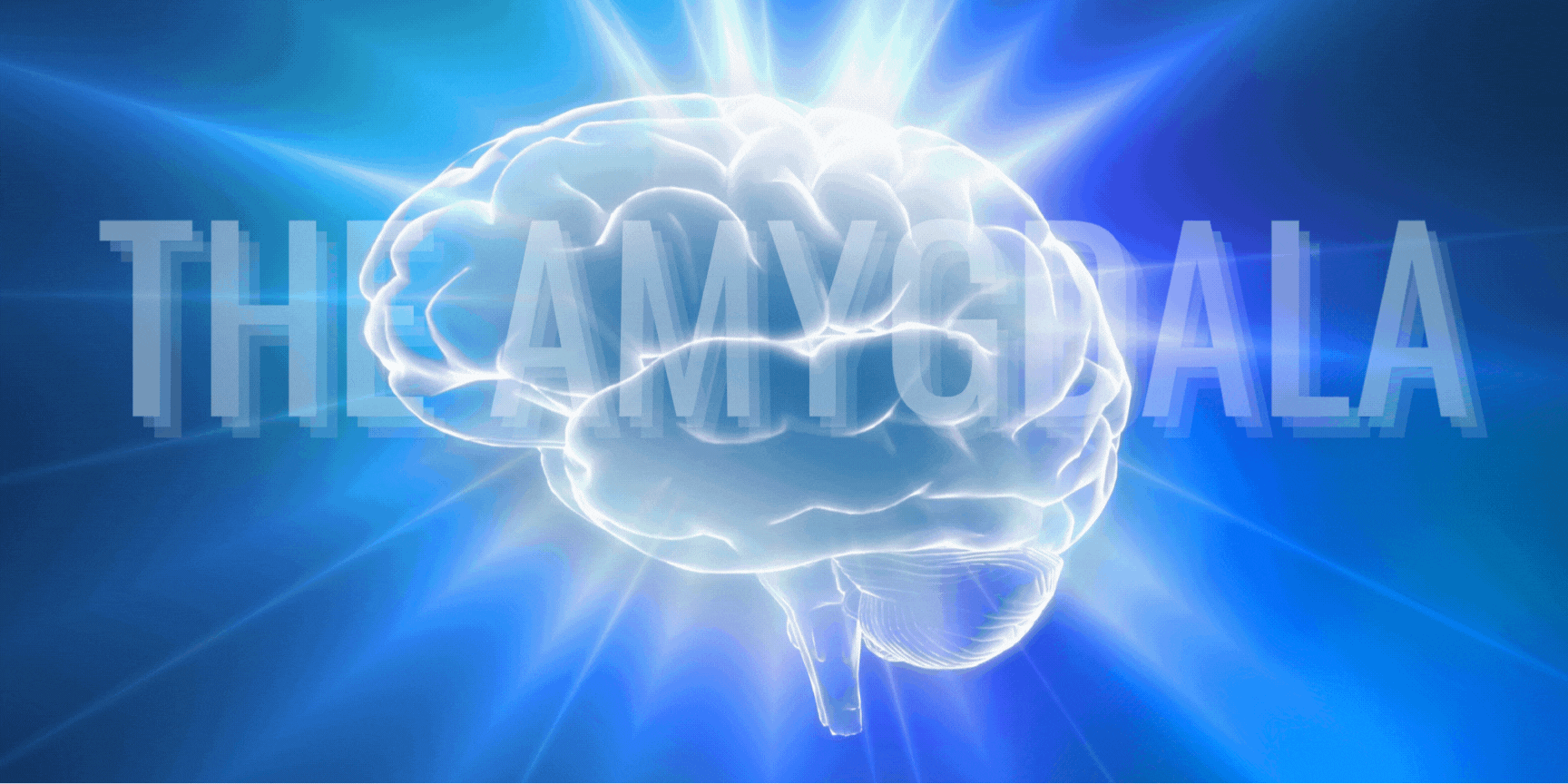Trigger alert: the Amygdala
Amygdalae (plural of “amygdala”) are at the heart of the brain’s Limbic System, in the heart of the brain and very much connected to the parts of the brain leading down into the central nervous system. Big brain-body connection right there.
When threat – or PERCEIVED threat – calls the amygdalae into action, within milliseconds your brain and body change. FAST. Stress hormones surge into your bloodsteam, causing all kinds of body – and brain – reactions.
skin gets all prickly as blood is diverted, FAST, to your large muscle groups
heartbeat and breath rates quicken to take in more oxygen and put it to use
your gut “clenches” as blood from your internal organs rushes to your muscles
glucose levels spike: the better to energize you for fight or flight
pupils dilate, mouths go dry, palms get sweaty – the whole body shifts gears, AND…
blood vessels in the prefrontal cortex constrict, taking it largely offline
At this moment, congratulations.
You’ve time traveled several hundred years BACK to the time when fighting or fleeing were essential to our survival.
These days, not so much. Tho the brain hasn’t gotten the memo yet. So it looks at threats to things like opinions, preferences, or sense of self as every bit as dangerous as those long-ago saber tooth attacks.
There’s possibly something “mirroring” that happens, too (brains are great at mirroring other brains) when conflict or argument ensues.
Maybe that explains why things escalate up so easily in these reactive times.
UN-hijacking yourself can often be difficult. Why? Well, the neocortex (home of the PFC) literally is at the command of more primitive parts of the brain. This can be true with rapid-fire perceived threat or – very much so – with sustained stress, even relatively low levels of it. Yikes.
PREVENTING hijacks? Probably not entirely possible, given the ancient, essential nature of the brain’s survival manifesto. Yet understanding that these days the amygdalae often fire false alarms can help. Really: knowing that things like angry or conflict-elevating reactions begin with a chemical reaction can help.
Breath can counter that chemical reaction because it brings more oxygen to the frontal lobes and PFC, which aren’t getting their usual dose when the amygdala alert is sounding.
Really. One intentional breath can change a LOT in your body and brain. Two? Even better.
As the frontal lobes and PFC come back online, things like emotional self-regulation (calming yourself down) and that all-important gift of CURIOSITY becomes possible.
Maybe a bit of calm and curiosity can be mirrored back to other brains, too. In fact, that’s the whole point of rockstar journalist and advocate for bridge building Mónica Guzman, author of the bestselling I Never Thought of it That Way (kind of a how-to guide to curiosity in triggered times).
She shares how on Episode 13 of The Brain and Beyond Podcast. That’s Mónica and her excellent book below.
Meet Mónica and her inspiring approach on The Brain and Beyond Podcast, episode 13.

